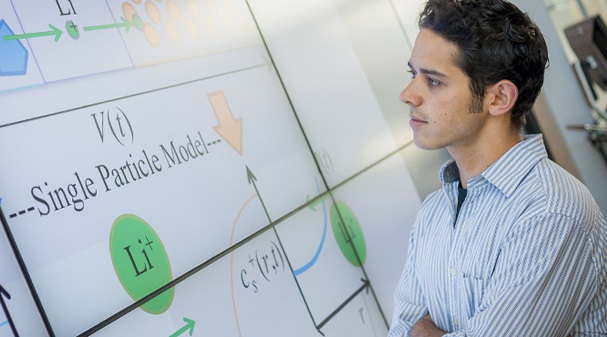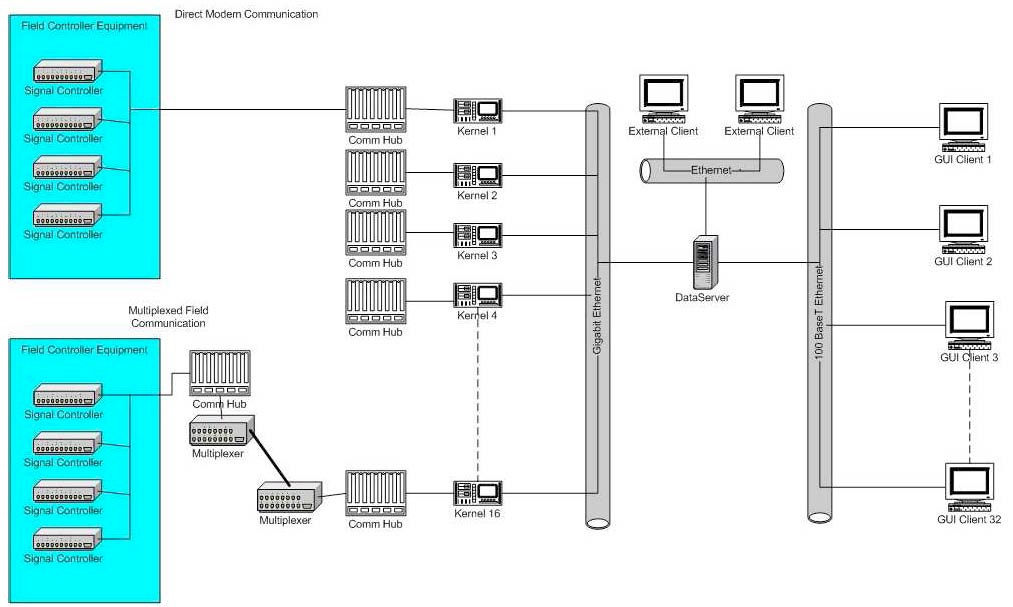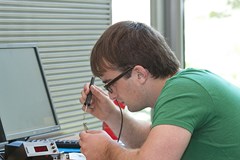The objective of the Civil Systems program in the Department of Civil and Environmental Engineering is to train leaders and professionals who will be able to design, build, manage, operate and implement systems (large and small) that behave as desired, achieving their intended performance goals efficiently as planned. The educational mission of the systems program is to encourage vertical integration of tools and technologies, and make it possible for students with existing degrees in branches of engineering and science to earn a graduate degree in Civil Engineering. The glue that holds a degree earned in the systems program together is the research work on a civil and environmental engineering problem.
 Our guiding principles in defining this program are: (1) that our programs should each have a unique "signature,” (2) that they should be flexible enough to encompass areas typically considered beyond the scope of CEE, and (3) that they should not replicate what can already be done within the traditional programs of CEE. The department has formed the program with a CEE professor and the hiring of two faculty members, each with a PhD in a non-civil and environmental discipline and research in areas far outside of traditional CEE pursuits. The department believes that their presence will lead to a broadening and expansion of our research and teaching mission through the melding of the new tools and study areas of the extended systems faculty and the more traditional areas of CEE. We believe that in order for CEE to grow, we must attract students from other branches of science and engineering. The students and faculty both are attracted to help solve our very challenging and societal-centric CEE problems, using their powerful tools from other disciplines. As a consequence, graduate students must take a specific set of courses which goes beyond the scope of the traditional fields in CEE.
Our guiding principles in defining this program are: (1) that our programs should each have a unique "signature,” (2) that they should be flexible enough to encompass areas typically considered beyond the scope of CEE, and (3) that they should not replicate what can already be done within the traditional programs of CEE. The department has formed the program with a CEE professor and the hiring of two faculty members, each with a PhD in a non-civil and environmental discipline and research in areas far outside of traditional CEE pursuits. The department believes that their presence will lead to a broadening and expansion of our research and teaching mission through the melding of the new tools and study areas of the extended systems faculty and the more traditional areas of CEE. We believe that in order for CEE to grow, we must attract students from other branches of science and engineering. The students and faculty both are attracted to help solve our very challenging and societal-centric CEE problems, using their powerful tools from other disciplines. As a consequence, graduate students must take a specific set of courses which goes beyond the scope of the traditional fields in CEE.
Civil Systems is a growing program, and is serving as a guiding light to CEE programs here and abroad. The program is still feeling its way through the thicket of possibilities, e.g., how do we maximize flexibility while maintaining the necessary modicum of structure? It is understood that this requires some unconventional rules in order to maintain the inter/multi-disciplinarity of the researchers. In some cases, a student may arrive already focused on a particular area, e.g. mathematics, that will lead to new tools to solve problems. That student might need a minimum number of traditional CEE courses in order to complete his/her research. Other students come from a CEE background and will work on more traditional projects, such as inversion of nanoseismic waveforms to map source kinematics within a fracturing solid. It is natural for this student to take more CEE courses, but the student will be pushed to take many courses―more than a minor―outside the department. This would include wave propagation and inversion courses in Earth and Planetary Science, fracture mechanics in Material Science and Engineering, signal processing courses or machine learning in Electrical Engineering and Computer Science, and Statistics, etc.
The hallmark of our systems student is an expertise in an abstract science or field of engineering and an application domain. The combination of abstraction-based tools with domain expertise provides the student with mobility between applications that is now needed during one’s career. For example, some fields within computer science departments are defined as abstractions, e.g., control theory, machine learning, networking, etc. This training makes a CS PhD’s work relevant to many applications, e.g., cars, buildings, cellular biology, and so on. CEE PhDs by contrast have traditionally been defined by an industry, e.g., road transportation, air transportation, water resources, structural design, but the lack of abstract training often ties the student to that industry for life.
The Civil Systems PhD produces students trained in both an abstraction and a domain. They will be able to do high-impact work in their domain from day one. Moreover, the abstraction component of the training will enable them to also move through several industries over a career. They can also use the abstract training to innovate in various industries.
 An ideal PhD student in Civil Systems engineering should advance both an application domain and abstraction in his/her thesis. For example, CEE Systems Engineering Alumnus Marco Zennaro worked on distributed computing for traffic signal control. His PhD work advanced the theory of distributed computing. This part of his work appeared in computer science journals. He also advanced traffic signal control. This part of his work appeared in transportation journals. Dr. Zennaro is currently working at Google Research. Likewise Siva Sitheram’s work appeared in ASCE journals and some of it has been published in optimization theory journals. His domain has been UAV's and infrastructure inspection. His abstraction is control and optimization. He is currently a professor of Civil Engineering at Texas A. & M. University. Thus, a systems engineering student usually publishes both theoretical and applied work in the journals of each respective community.
An ideal PhD student in Civil Systems engineering should advance both an application domain and abstraction in his/her thesis. For example, CEE Systems Engineering Alumnus Marco Zennaro worked on distributed computing for traffic signal control. His PhD work advanced the theory of distributed computing. This part of his work appeared in computer science journals. He also advanced traffic signal control. This part of his work appeared in transportation journals. Dr. Zennaro is currently working at Google Research. Likewise Siva Sitheram’s work appeared in ASCE journals and some of it has been published in optimization theory journals. His domain has been UAV's and infrastructure inspection. His abstraction is control and optimization. He is currently a professor of Civil Engineering at Texas A. & M. University. Thus, a systems engineering student usually publishes both theoretical and applied work in the journals of each respective community.
In order to encompass the many scales of the abstract and the domain of civil and environmental engineering problems, the guidelines for course work should be as flexible as possible while maintaining intellectual rigor and development of in-depth knowledge by the student. In order to support faculty research and to produce a new type of engineer, we have a program in which the students will take a core of CEE Systems courses, 271, 290I, 291F. The remainder of the major field of study might be in our department, essential related courses in other departments, in several departments, or in an interdisciplinary group. Once the student has chosen a field of study, they confer with the systems graduate advisor and their thesis advisor to select the sequence of courses that will best prepare them for the qualifying examination and research work. For our program to remain multidisciplinary, we must define our major as a multidisciplinary mix of the Civil Systems CEE core and, possibly other courses taken outside the department.
While our program is still young, it has been extremely successful. In past years, several other departments in the US have opened faculty positions and programs that share the same philosophy (UIUC, University of Michigan, CMU, MIT), influenced by our program. Graduates from our program now in academia have secured position in top schools in the US and abroad: UIUC CEE and EE, Purdue University Aero Astro, Georgia Tech CEE and EE, KAUST University in Saudi Arabia, and La Catolica Universidad in Chile. Other alumni have gone on to work at Google, NASA, or have started their own companies.
As the newest program successfully established in Civil and Environmental Engineering, it is our responsibility to renew and redefine the frontiers of the profession. Following examples from other academic departments at UC Berkeley (for example, Electrical Engineering and Computer Science, which has hired faculty working on systems biology in recent years), we are redefining Civil and Environmental Engineering by absorbing new disciplines into our own. The Civil and Environmental Engineering Department is one of the best departments in the US owing to its faculty’s visionary breakthroughs in fields such as mathematics, numerical analysis and structural engineering over the past decades; they have had tremendous impact on the world’s practitioners. Today, the Civil Systems program is continuing this legacy, ensuring that Civil and Environmental Engineering keeps growing beyond its traditional bounds.








